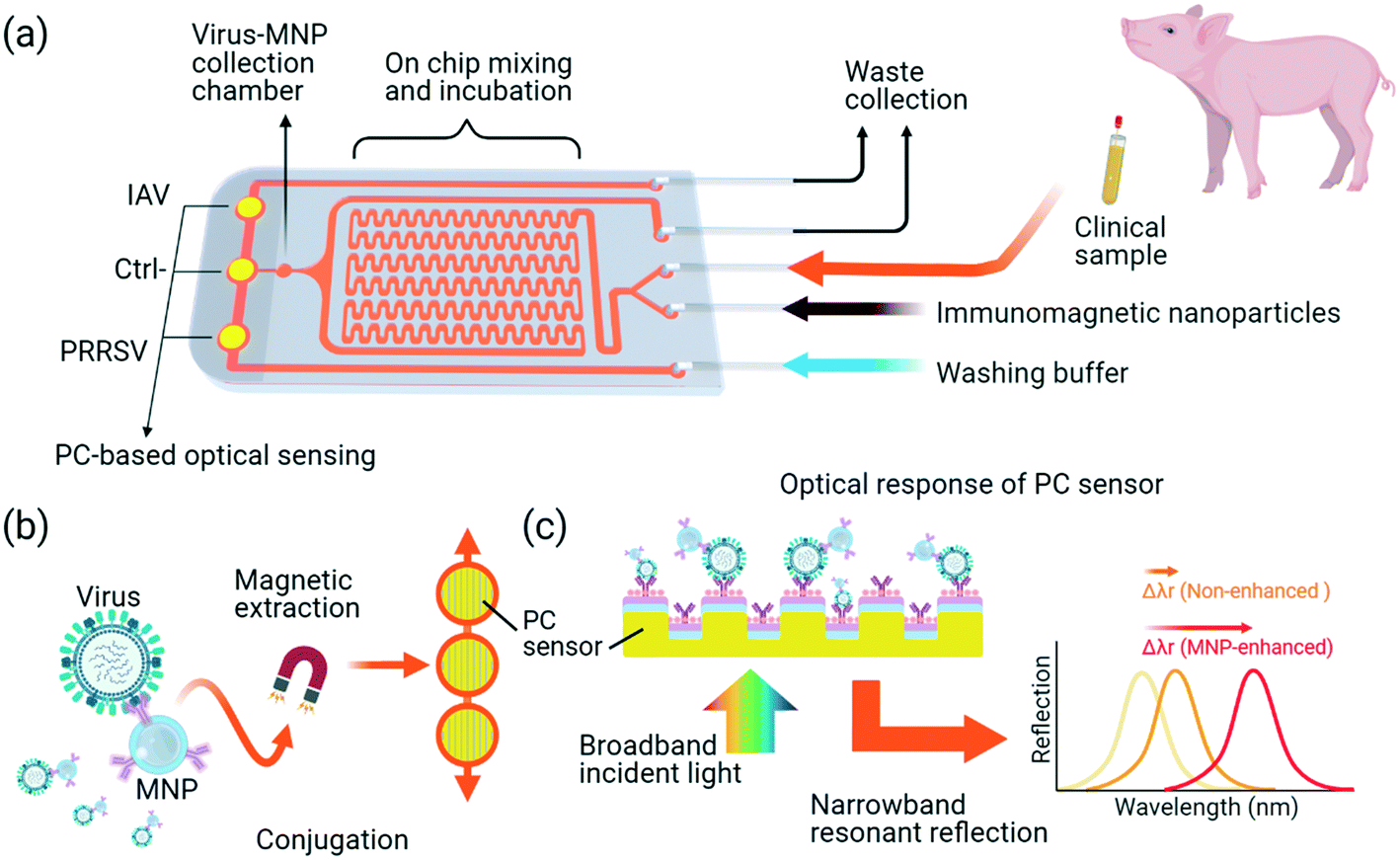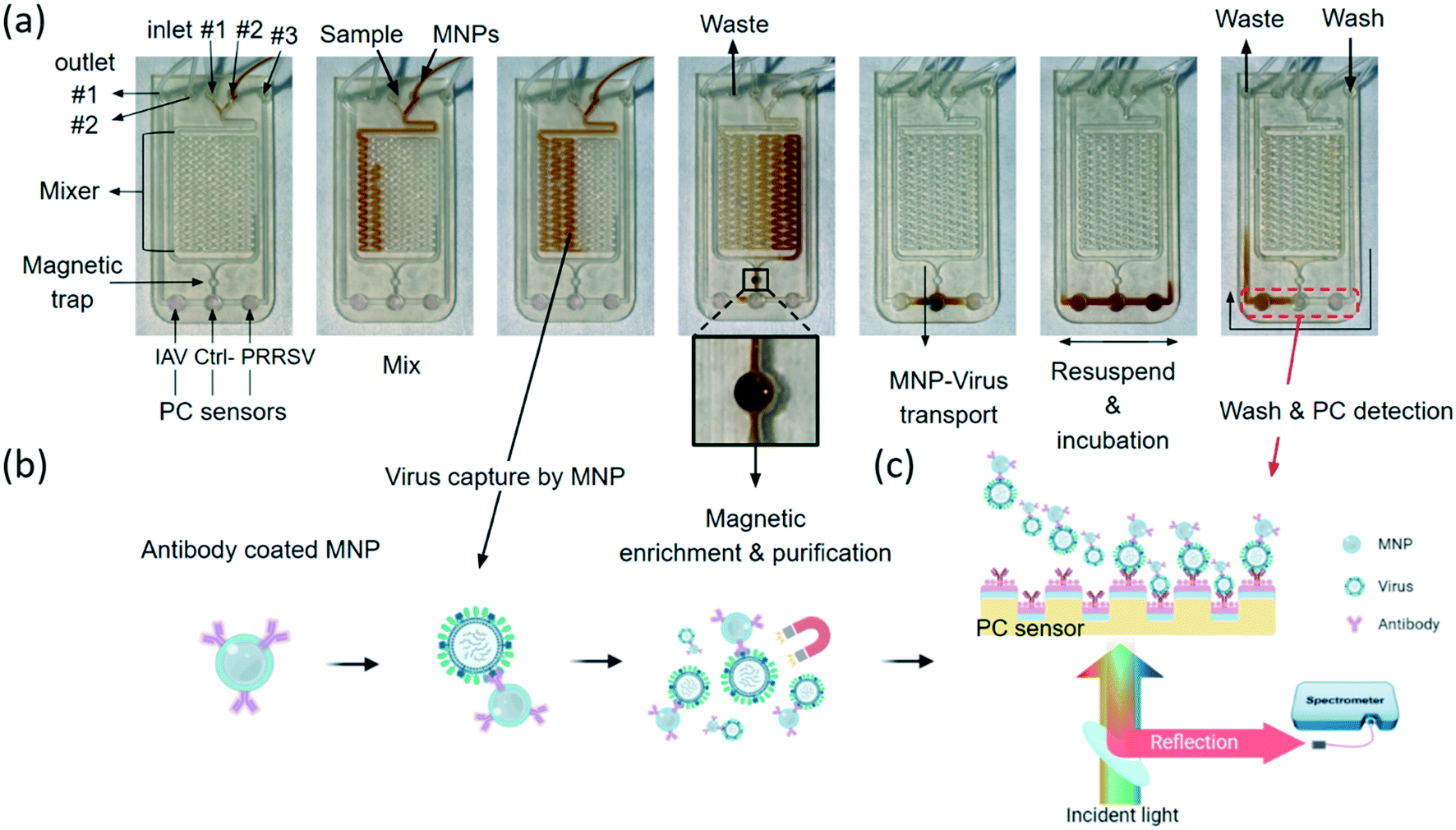
30 Jul Microfluidic biosensor for on-chip assay of viruses in livestock
Although the majority of microfluidics research has focused on human health, there is great potential for microfluidics in the agriculture sector. For this week’s research highlight, we have selected a recent article published in the Lab On a Chip journal in which an integrated microfluidic chip is introduced for rapid on-chip assay of respiratory viruses of livestock.
“This work reports an integrated magneto-opto-fluidic (iMOF) virus sensor system that integrates magnetic nanoparticle (MNP)-based virus enrichment and a PC-based label free sensor in a single flow cell for rapid analysis of multiple swine respiratory viruses. The antibody functionalized MNPs can not only specifically recognize and enrich the target viruses but also transfer the MNP–virus conjugates to the surface of PC biosensors“, the authors explained.

“iMOF sensor chip for swine respiratory virus analysis. (a) Schematic diagram of the iMOF sensor chip. The microfluidic chip consists of a sample mixer, an MNP collection chamber, and three PC sensing chambers. (b) Integrated virus purification and detection assay using antibody-coated MNPs and PC sensors. (c) Schematic illustration of the label-free analysis using resonant reflection spectra measured from PC sensors. The MNPs can enhance the shift of the resonant wavelength for the absorption of target MNP–virus conjugates”. Reproduced from Q. Zhang, G. Rawal, J. Qian, H. Ibrahim, J. Zhang, L. Dong and M. Lu, Lab Chip, 2022, Advance Article. under a Creative Commons Attribution 3.0 Unported Licence

“Fabricated flow cell for the integrated virus enrichment and detection assay. (a) Photos taken during the virus and MNP mixing, extraction, transportation, and detection steps. (b) Schematics of the assay steps including surface functionalization of the MNP, conjugation of the virus to the MNP, and enrichment of MNPs using a magnet. (c) Detection of the MNP–virus conjugates using a PC biosensor. The detection chambers were designed for the IAV, PRRSV, and a negative control by coating the PC surface with anti-IAV antibody, anti-PRRSV antibody, and BSA, respectively“. Reproduced from Q. Zhang, G. Rawal, J. Qian, H. Ibrahim, J. Zhang, L. Dong and M. Lu, Lab Chip, 2022, Advance Article. under a Creative Commons Attribution 3.0 Unported Licence
“The advantages of the on-chip virus assay include multiplexed detection, low-cost and disposable sensors, short total assay time of one hour, and automated assay. The iMOF platform exhibited LODs of 3.5 TCID50 mL−1 and 5.9 TCID50 mL−1 for the detection of IAV and PRRSV, respectively.“, the authors concluded.
Figures and the abstract are reproduced from Q. Zhang, G. Rawal, J. Qian, H. Ibrahim, J. Zhang, L. Dong and M. Lu, Lab Chip, 2022, Advance Article, DOI: 10.1039/D2LC00406B under a Creative Commons Attribution 3.0 Unported Licence.
Read the original article: An integrated magneto-opto-fluidic biosensor for rapid on-chip assay of respiratory viruses of livestock


